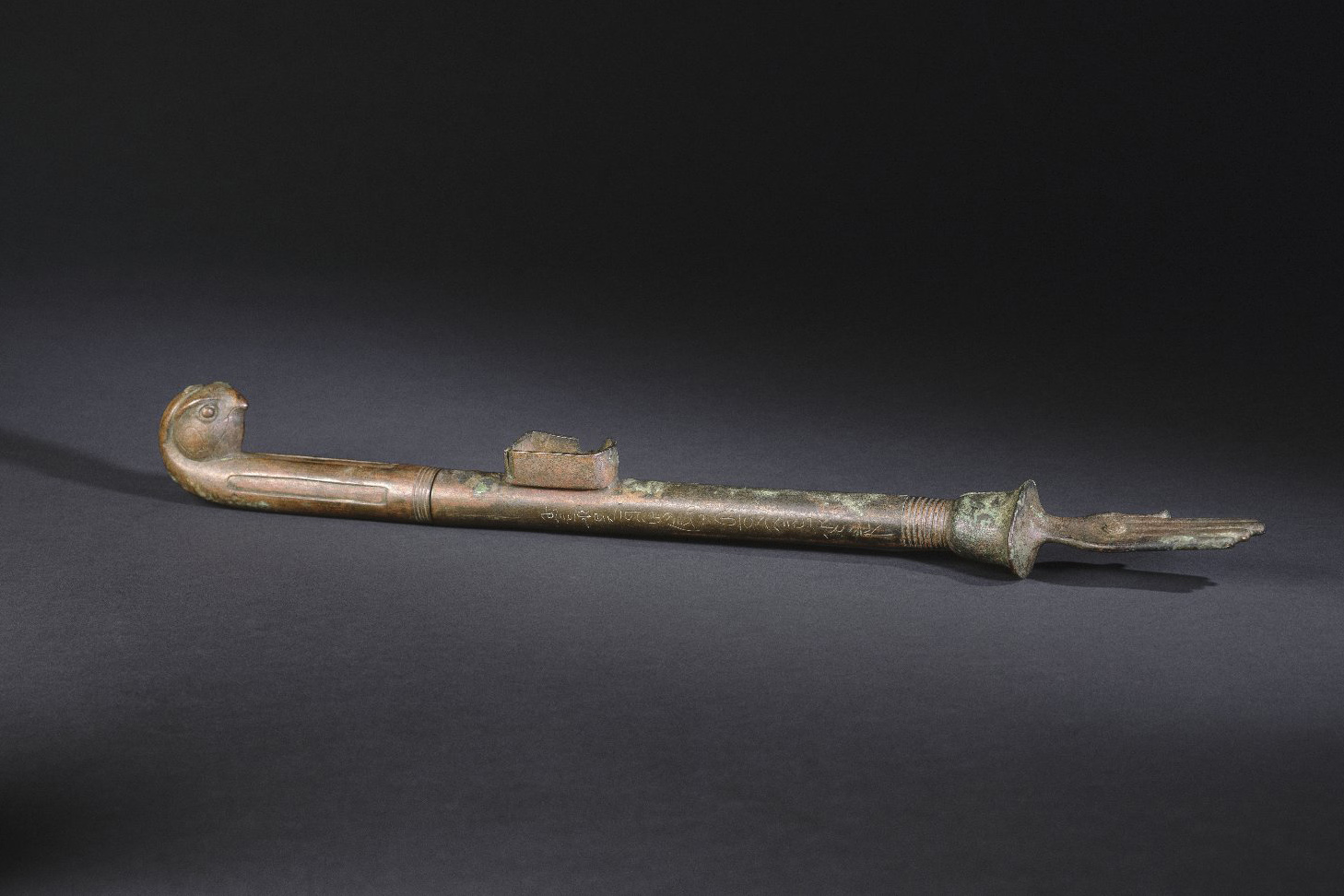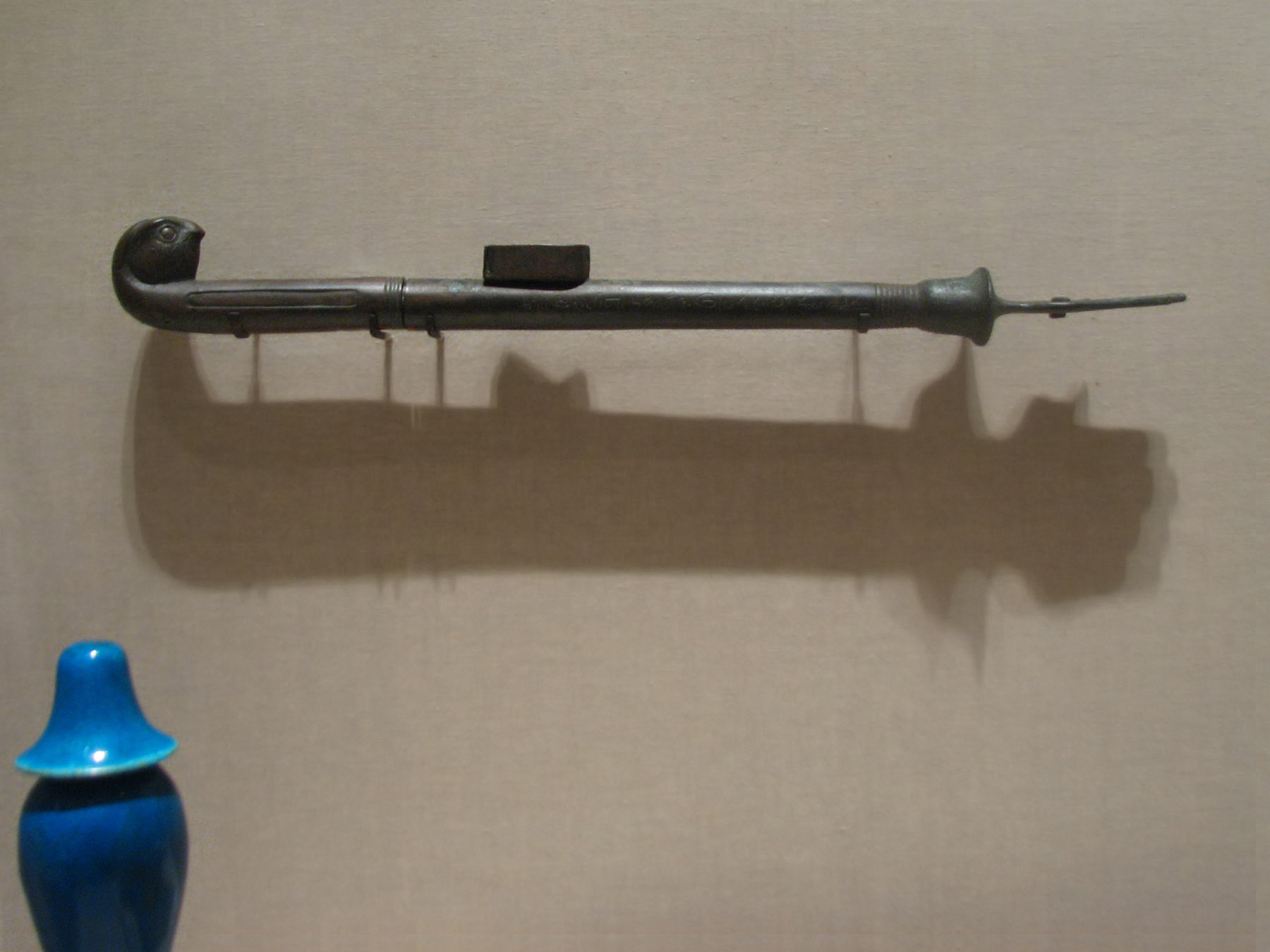
Arm-Shaped Censer
Bronze, 2 1/4 x 21 7/16 in. (5.7 x 54.5 cm)
Egypt, Late Period, ca. 712-404 B.C.E.
Brooklyn #72.8, Gift of Michael DeBry
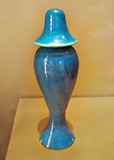
(The other piece is a New Kingdom Faience Ritual Vessel from Thebes)
Photo © Joan Lansberry, May 2008-2016
 Arm-Shaped Censer Bronze, 2 1/4 x 21 7/16 in. (5.7 x 54.5 cm) Egypt, Late Period, ca. 712-404 B.C.E. Brooklyn #72.8, Gift of Michael DeBry
|
|
This piece is actually in the shape of a hieroglyph, which Richard Wilkinson shows us:
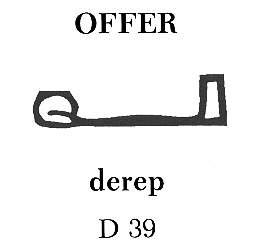 From _Reading Egyptian Art_, page 53
"Another use of the offering arm is found in the design of censers which were frequently made in this same form. The objects consisted of a handle - usually about the length of the human forearm - with a hand at one end which held a bowl in which incense was burned. A small box was often attached to the upper surface of the 'arm' to hold the pellets of incense burned in the bowl. Various elaborations were made upon this basic design, and here, as is frequently the case in other examples, the 'elbow' of the censer has been shaped as the head of a falcon-like deity and the 'wrist' area is expanded into a decorative papyrus umbel - both elements symbolic of solar and offering concepts."(Ibid) He gives a image of Seti I censing at his temple in Abydos: |
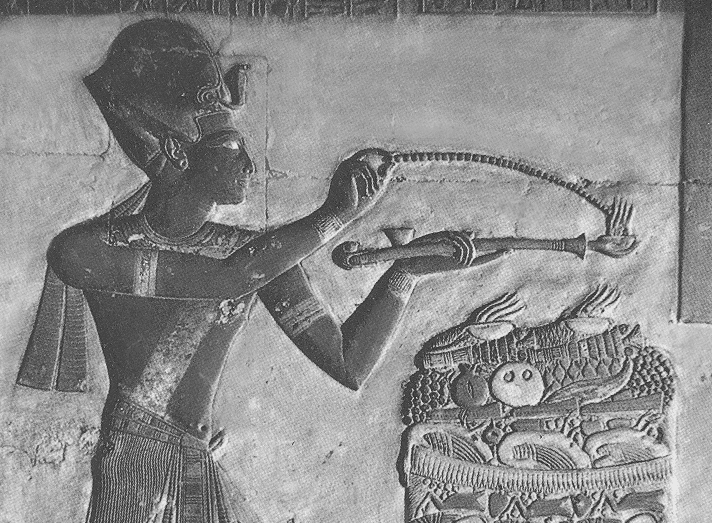
| The instrument Seti I is using appears very similar to the one now in the Brooklyn Museum. (I include the museum's photo so you can better see the Horus falcon head:) |
